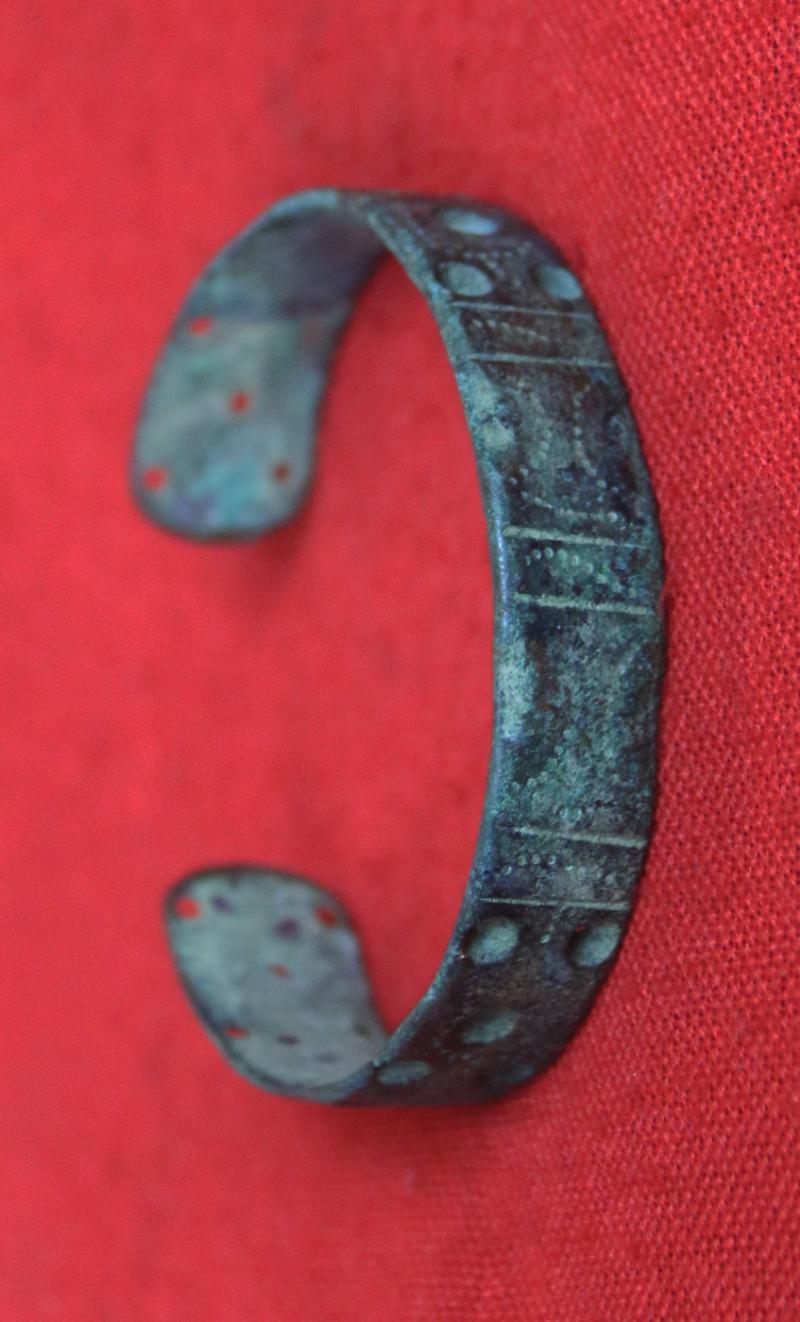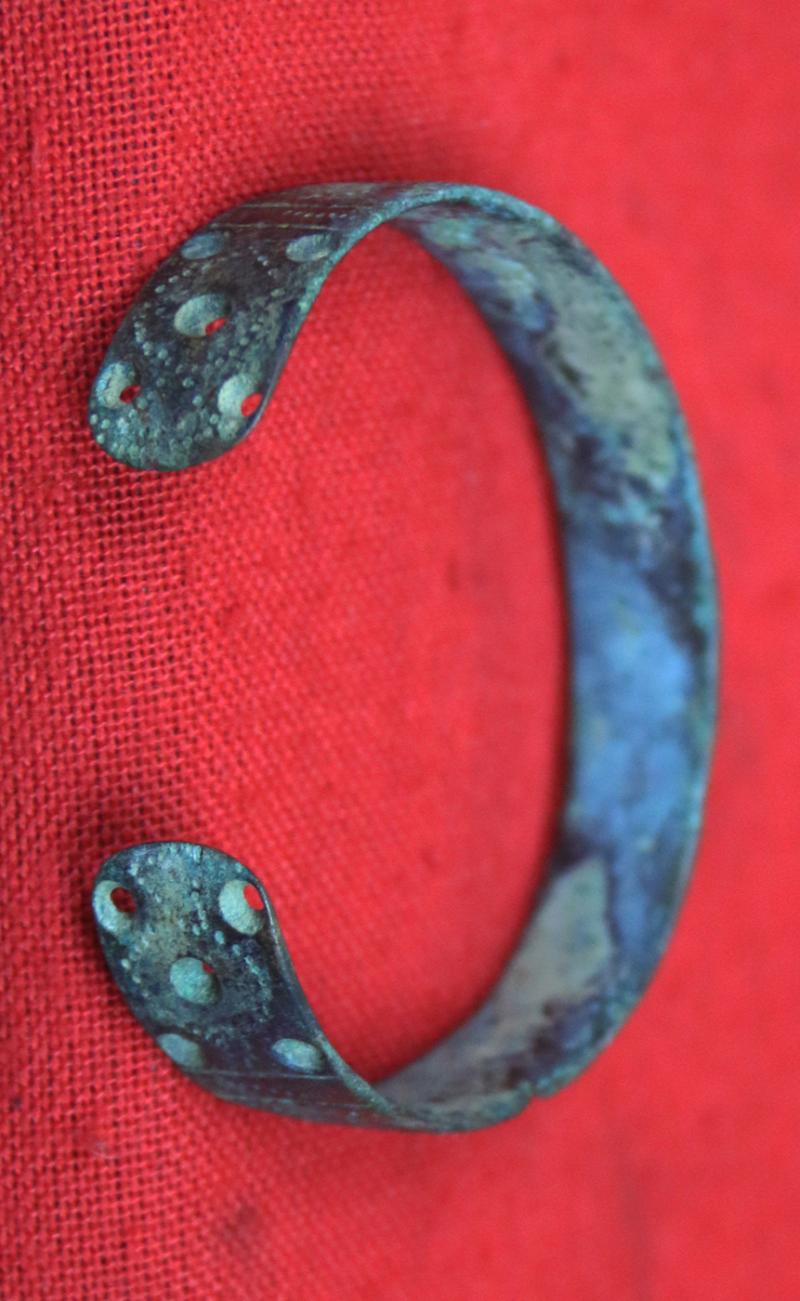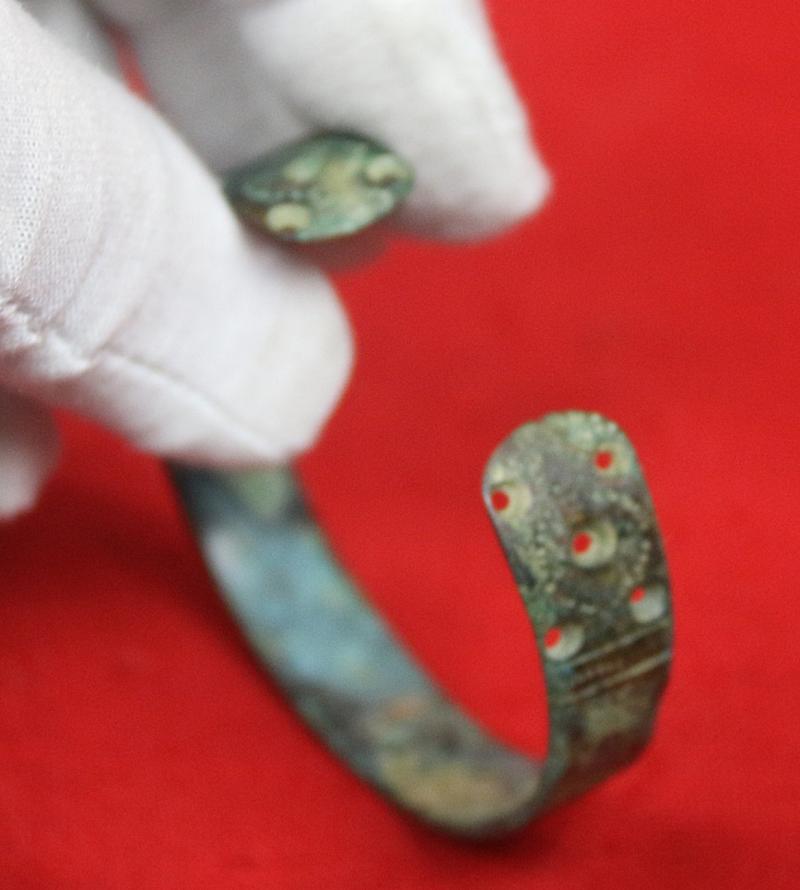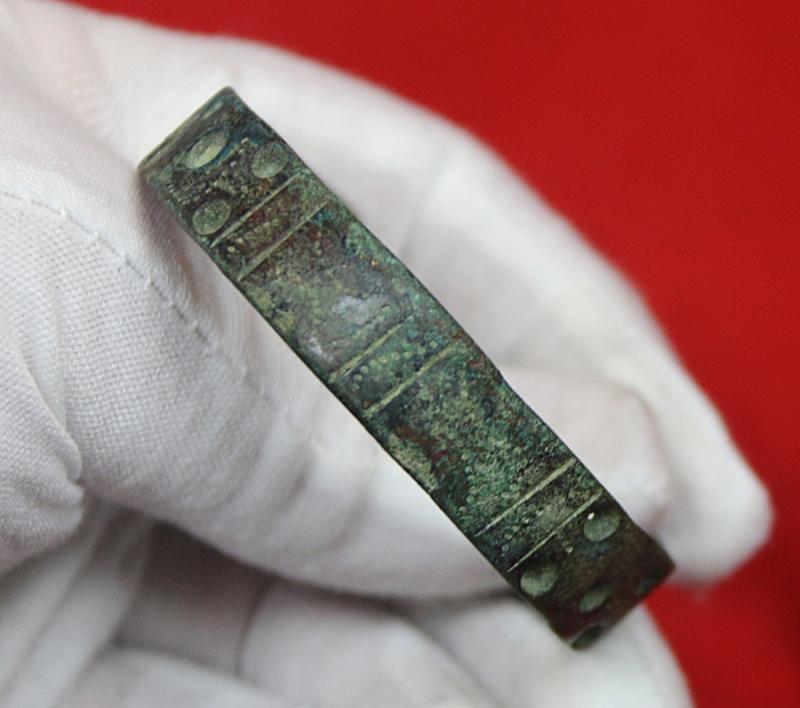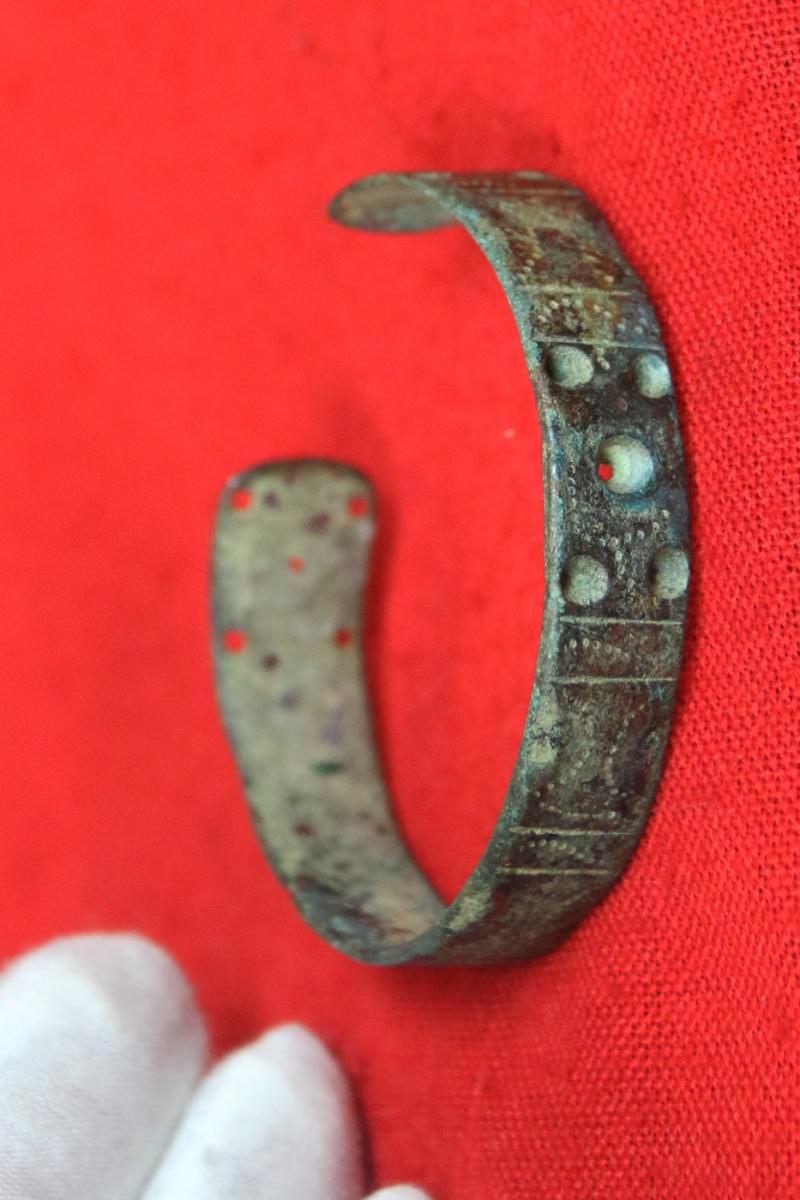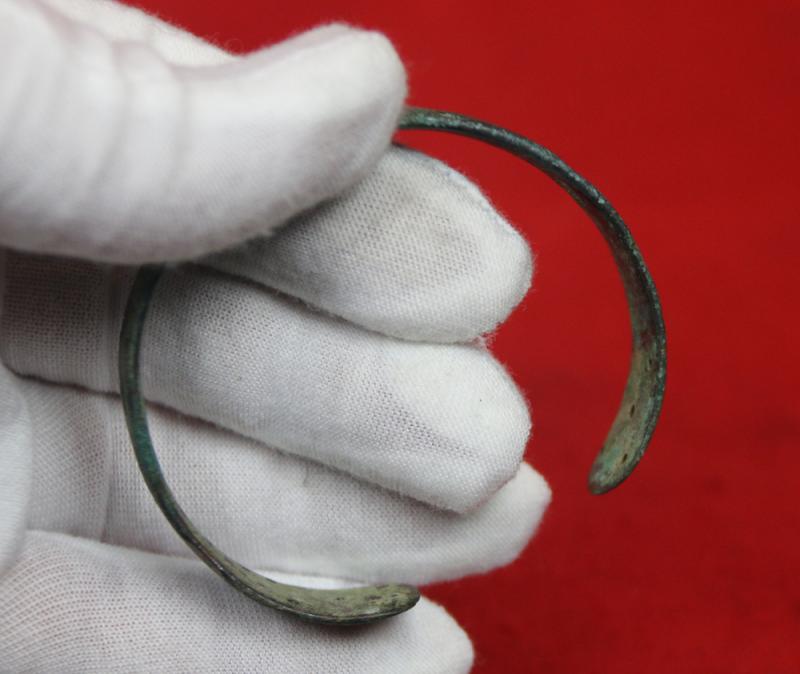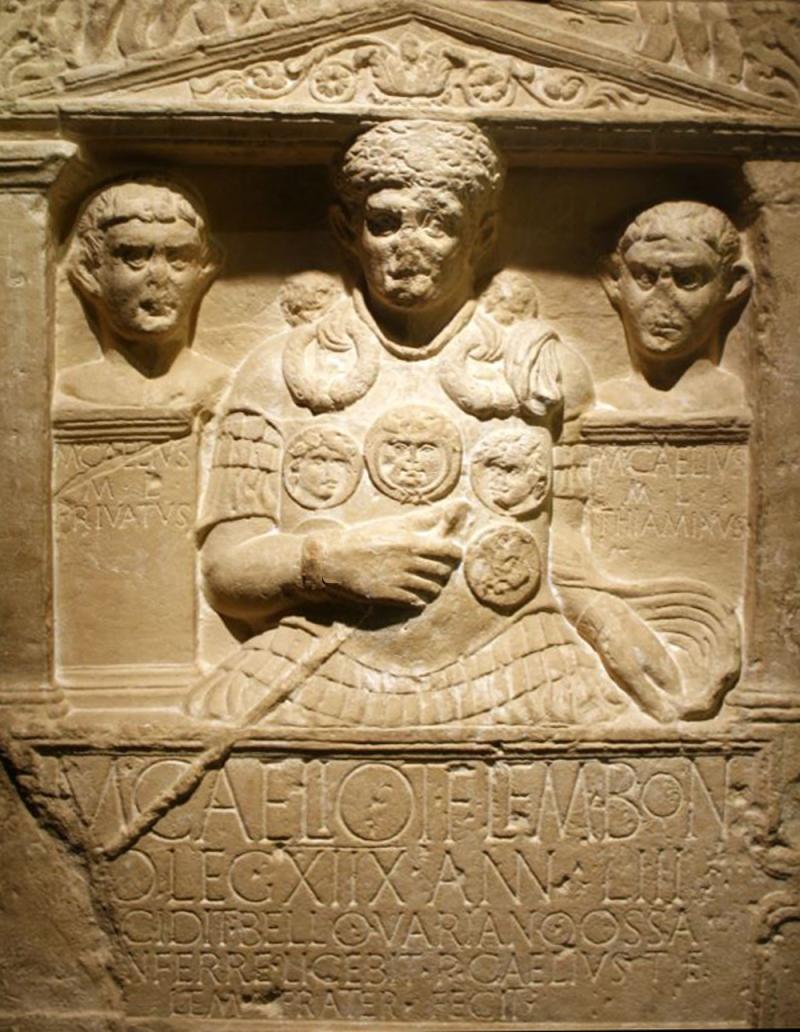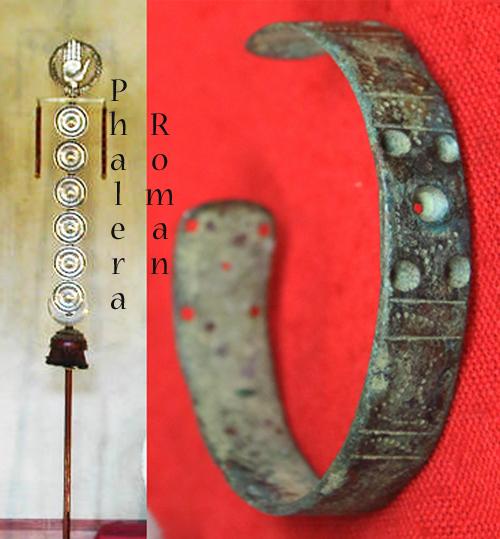A Most Fine Original Copper-Bronze Imperial Roman Legionary's Military Armilla, Awarded for Military Gallantry Around 2000 Years Old
An Armilla (plural Armillae) was an armband bracelet awarded as a military decoration (donum militarium) to soldiers of ancient Rome for conspicuous gallantry. Legionary (citizen) soldiers and non-commissioned officers below the rank of centurion were eligible for this award, but non-citizen soldiers were not. However, a whole auxiliary regiment could be honoured by a title as an equivalent award, which in this case would be Armillata ("awarded bracelets"), or be granted Roman citizenship en masse as a reward. This entitled an auxiliary regiment to add the appellation civium Romanorum (Roman citizens) to its list of honours.
A very fine circa 100 AD. Imperial Roman Armilla, around 2000 years old in superb condition with natural verdigris patination. It is incised and pierced in typical Roman military style. A fine cast bronze Armilla bracelet with rectangular section and tapering terminals with five stylised Phalera type piercings repeated four times, and numerous, typical military engraved lined panels, with hammered dot decor, and open ended flattened pierced spatula terminals.
A Phalera was a disk, usually made of gold, silver, bronze or glass, and worn on the breastplate during parades by Roman soldiers who had been awarded it as a kind of medal. Roman military units could also be awarded Phalerae for distinguished conduct in action. These circular disc awards were often mounted on the staffs of the unit's standards see photo in the gallery of one such standard in a German Museum.
Armillae were armband style bracelets awarded as a military decoration. The rank of the soldier in question determined the metal from which the bracelet was made either gold, silver or bronze. These bracelets were not for everyday wear but were occasion pieces worn at special military and civic events such a triumphs, religious ceremonies and games.
Roman military honours were not awarded posthumously, but those won during a soldier's lifetime were often proudly shown on his sarcophagus or cenotaph. The armillae awarded to senior centurion Marcus Caelius of Legio XVIII, for example, are evident on his funerary monument, and three pairs of armillae can be seen on the memorial panel at Villa Vallelunga in Italy which depicts the awards granted to veteran C. Vibius Macer during his years of active service.
Military armillae were modelled on those worn by the Celts. The tradition of using Celtic-style torcs and armillae as Roman military decorations had its beginnings in 361 BC when Titus Manlius Torquatus (consul 347 BC) slew a Gallic chieftain of impressive size in single combat. He then stripped the bloodstained torc from the corpse's neck and placed it around his own as a trophy. The Romans were initially daunted by the fearsome appearance of the Gauls, whose elite warriors were "richly adorned with gold necklaces and armbands". The torc was the Celtic symbol of authority and prestige. By his action, Torquatus in effect took the vanquished chieftain's power for his own, and created a potent, visible token of Roman domination. As such, over time the torc and also the armilla were adopted as official awards for valour, taking on the role of symbolic war trophies.
Armillae were made in a substantial masculine style and produced in a variety of designs: a solid, hinged cuff, sometimes inscribed with legionary emblems or decorated with incised patterns; an open-ended spiral; a chunky, rounded bracelet with open or overlapping ends; or a torc in miniature. Armillae which were open-ended or had overlapping ends often featured knobs or snake-heads as terminals.
The tombstone of Marcus Caelius who was the First centurion of the 18th Legion. His brother set up this monument to commemorate his death in the ‘bello Variano’, he is wearing his military gallantry award Armilla above his right wrist.
As with all our items it comes complete with our certificate of authenticity
Code: 24633
1495.00 GBP

